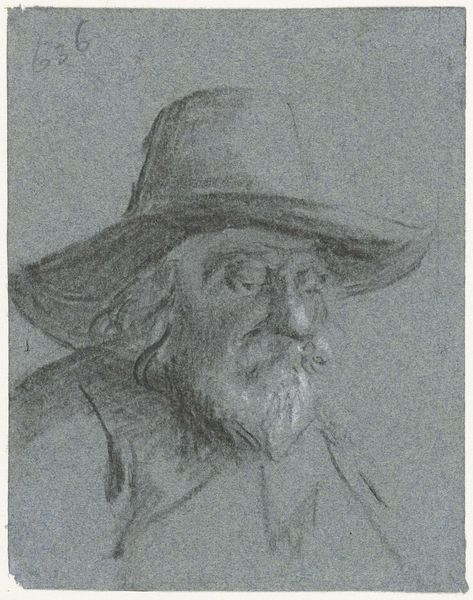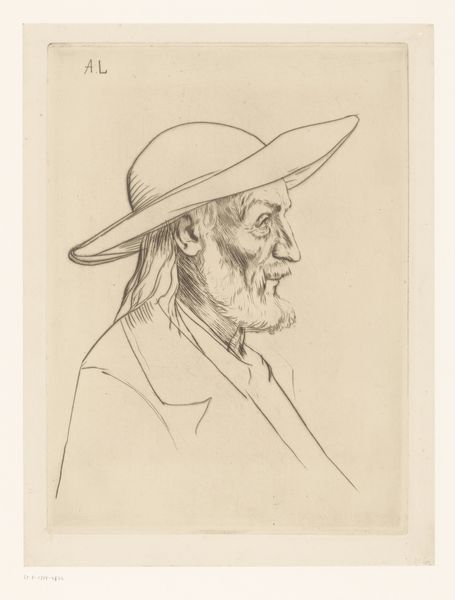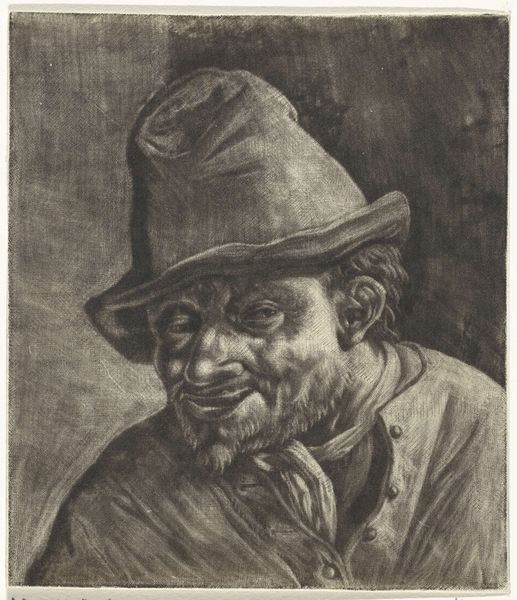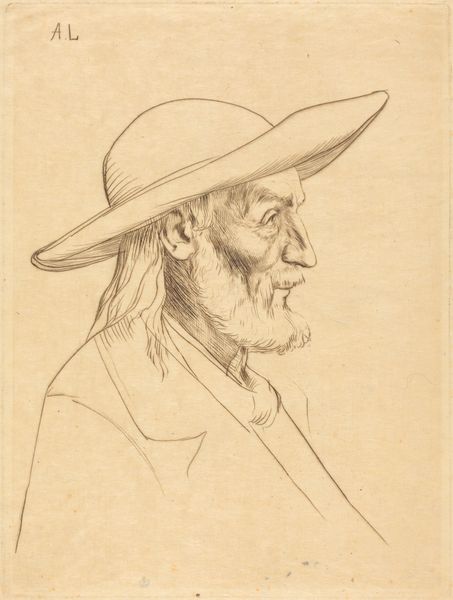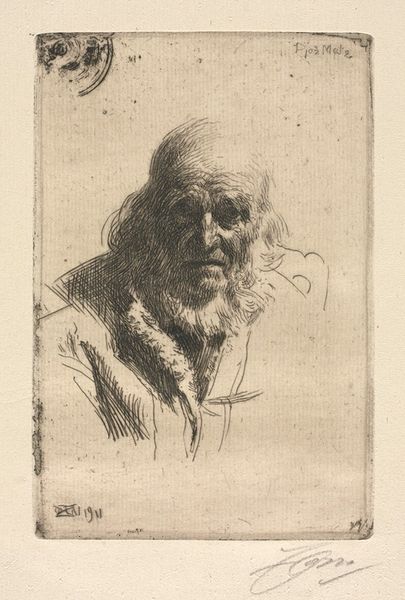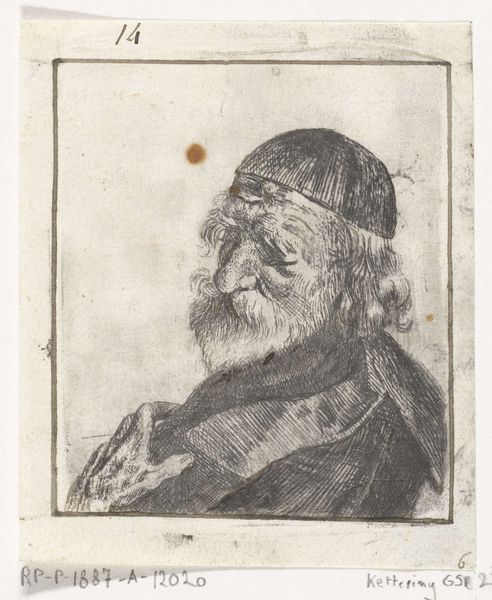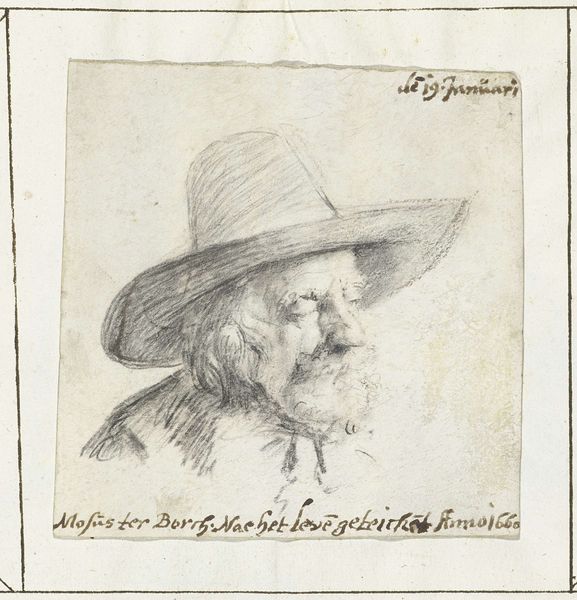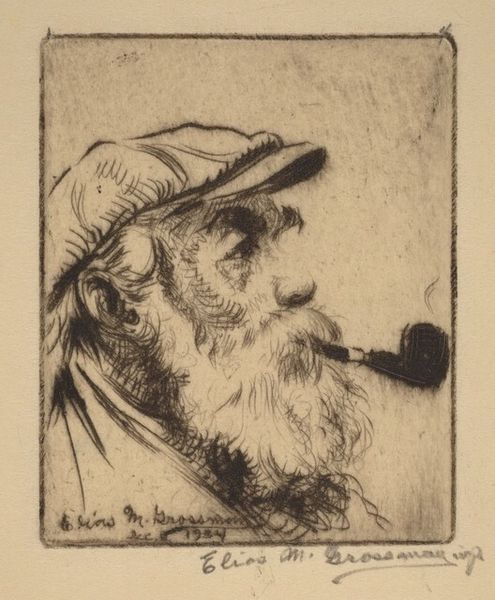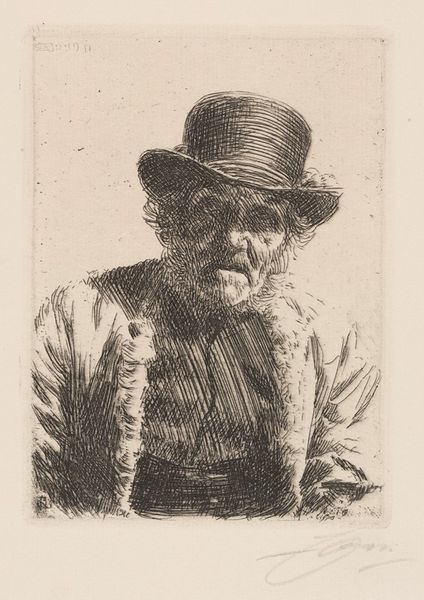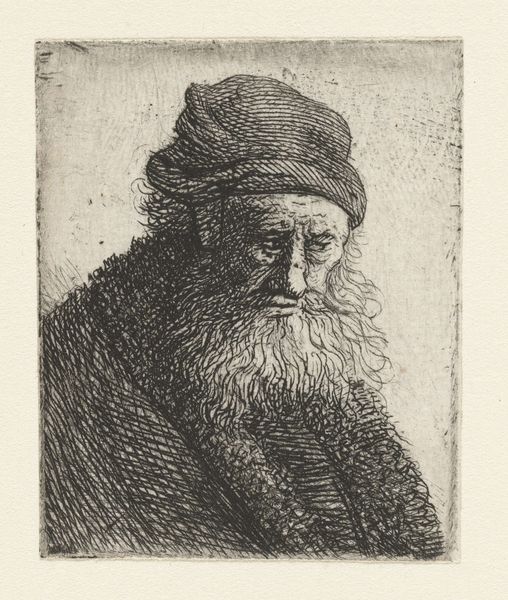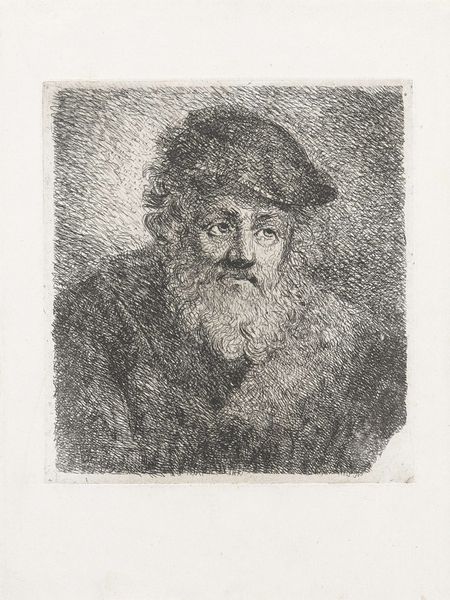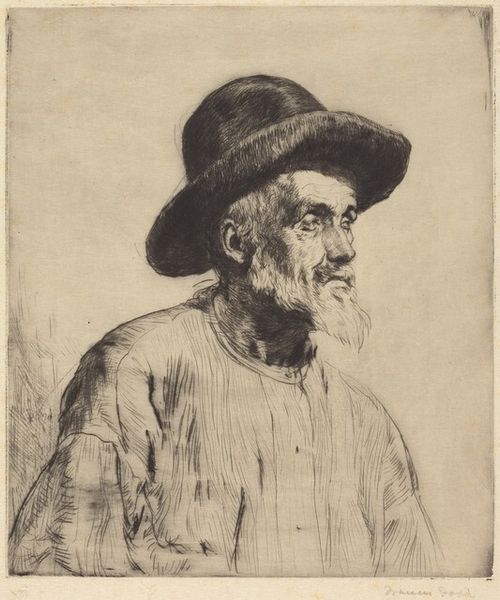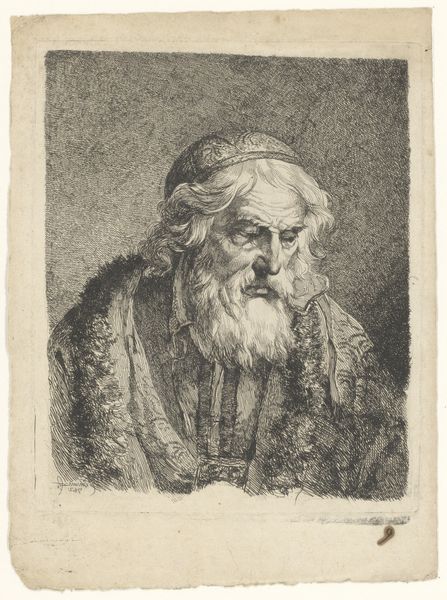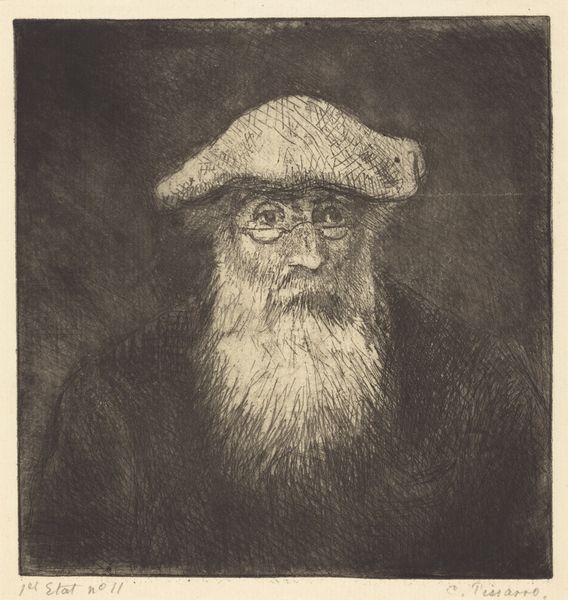
print, engraving
#
portrait
#
baroque
#
dutch-golden-age
# print
#
engraving
#
realism
Dimensions: height 173 mm, width 140 mm
Copyright: Rijks Museum: Open Domain
Curator: The figure in this 1667 print by Jacob Toorenvliet emanates a quiet sense of dignity. Abram Toorenvliet, the artist’s father, gazes thoughtfully towards the side with a wise, almost melancholic expression. It is created using engraving, showcasing remarkable detail for the time. Editor: The first impression is striking – an elder in shadowed lighting, with a rather commanding presence achieved using the stark contrast of light and dark to render a sense of contemplation or sorrow, framed perfectly against the background's complete lack of detail. His direct gaze almost dares us to know him. Curator: The style, heavily rooted in realism and baroque drama typical of the Dutch Golden Age, isn't just an aesthetic choice. It reflects a societal focus on portraying individuals accurately, reflecting the burgeoning merchant class. It feels like an attempt to fix someone specific in place, through this image—forever. Editor: The detail is striking—notice how the hat subtly hides the crown of the head. And how does the hat function, culturally? What statement does the sitter, and indeed the artist, try to make by it? Or even by choosing a monochrome print over colorful oil paint? The material choice—the print—makes me feel the democratizing influence of printmaking, how accessible yet fragile these paper artifacts were and are. Curator: Precisely. Jacob honors his father with a permanence offered by art; however, you correctly pointed out that prints offer relative affordability and, hence, accessibility—it speaks to the complex social function of portraiture. Editor: It makes me wonder, also, how identity functions in family and cultural memory. Beyond Jacob honoring his father Abram, can you touch on the visual signs that highlight familial values? Or perhaps where tensions or disruption appear between what is shown to us versus the lived historical reality? Is this the reality or simply another curated impression of an elder? Curator: Consider that the portrait itself becomes a cultural artifact carrying generational significance. This reminds me of a passage of art being a bridge to history… Each element –the beard's texture, the soft fabric of his clothes – carries coded meanings related to family lineage. Each generation filters and then reproduces stories; this portrait serves as visual shorthand, conveying something perhaps between father and son. Editor: It makes one consider both how much we can read from one static moment and also what crucial information will forever be just out of reach from a twenty-first-century audience. How to grapple with that which resists simple interpretation? Curator: Indeed—it requires imagination but always a tether back to informed visual readings. I am grateful to have reconsidered this portrait through a historical lens. Editor: Thank you—I found it helpful to be guided toward understanding visual language within the wider contexts of history.
Comments
No comments
Be the first to comment and join the conversation on the ultimate creative platform.
